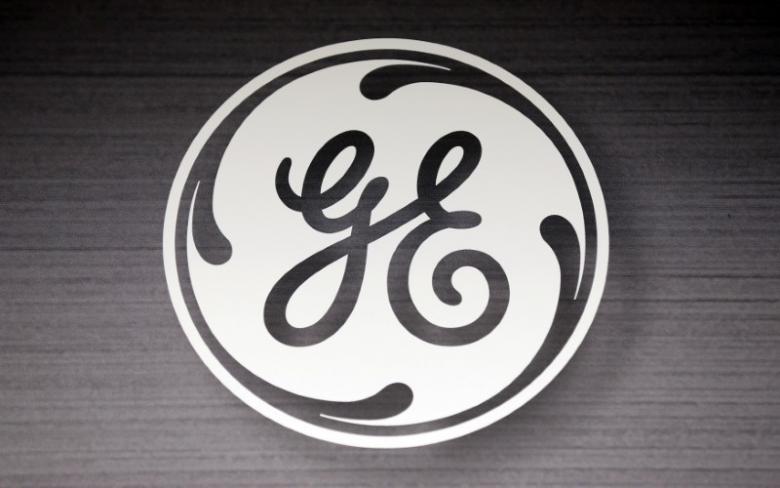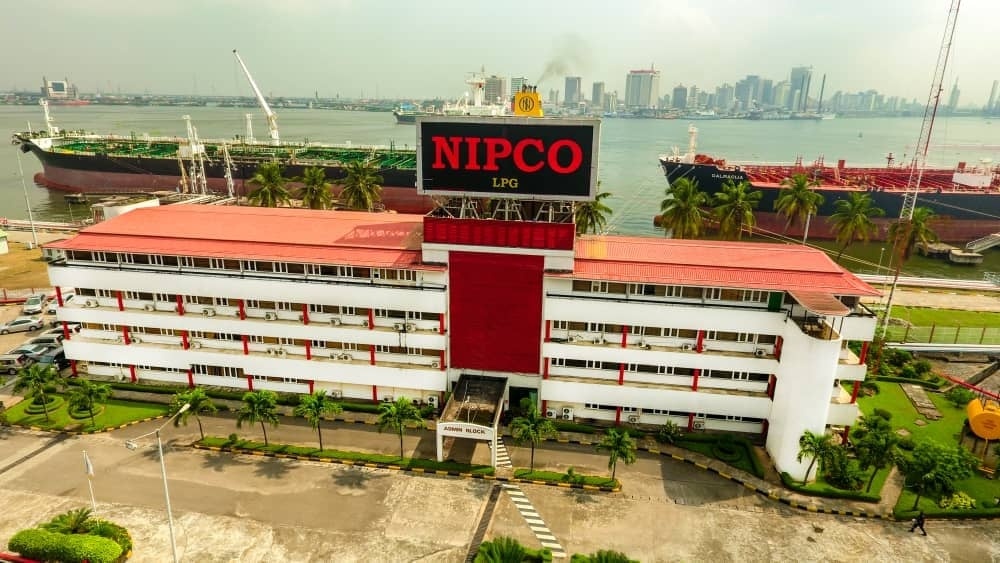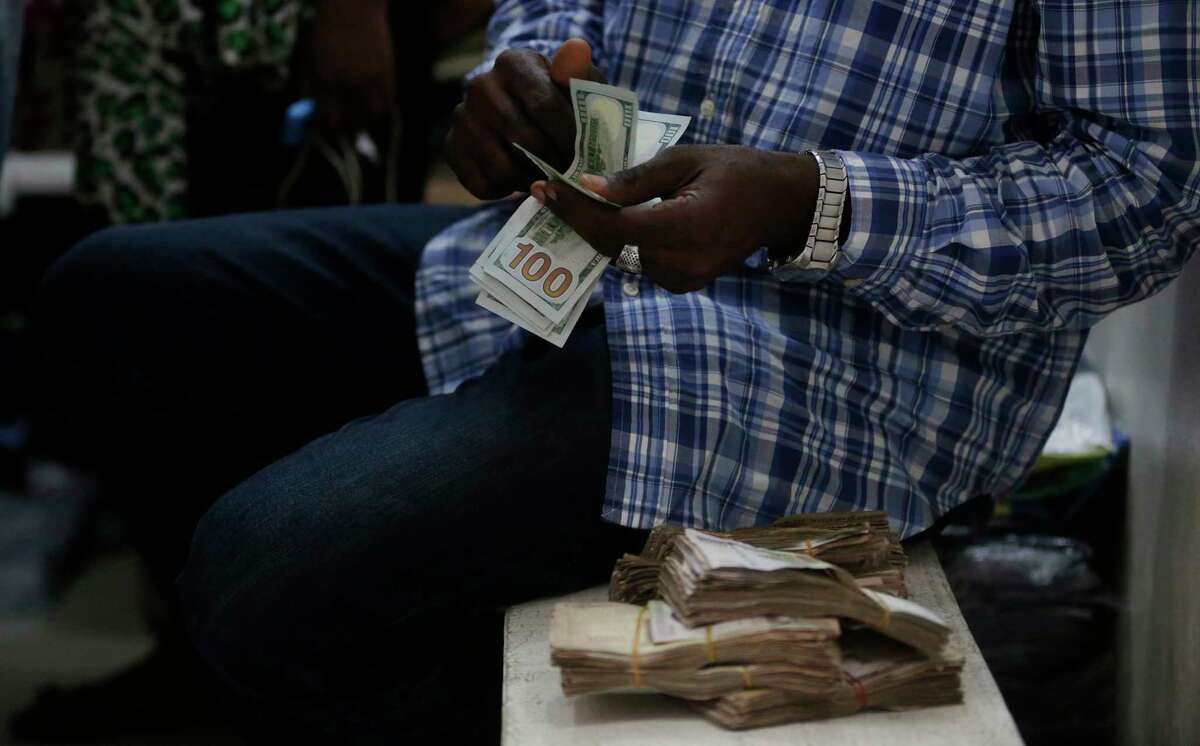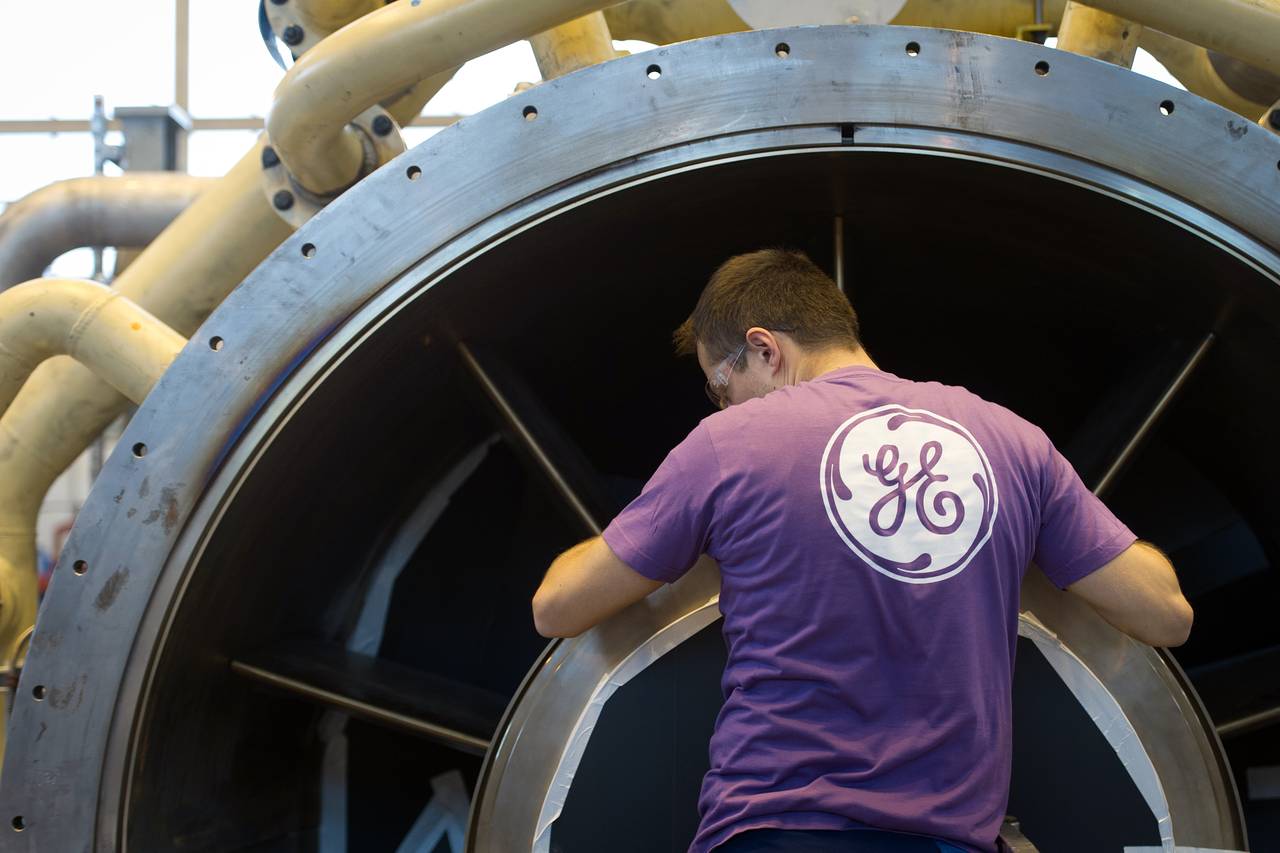Economy
GE Installs 100th Power Plant in Sub-Saharan Africa

By Modupe Gbadeyanka
One of the leading players in the energy sector in Africa, GE Power, has announced installing its 100th power plant in Sub-Saharan Africa.
This significant milestone was achieved with power plants in Angola powered by trailer-mounted aero gas turbine technology. The company has now installed over 300 turbines in up to 22 countries in Sub-Saharan Africa.
GE Power is at the forefront of innovation and technology in energy while collaborating with power producers across the region.
Commenting on this feat, Leslie Nelson, CEO, GE’s Gas Power business, Sub-Saharan Africa, said, “This milestone is a testimony of our commitment to providing power solutions to meet the growing energy needs in many countries in the region ahead of other OEMs.
“Our regional operations are led by an expert African team. Our flexible and modular energy solutions respond to the ever-changing needs of the communities where we work and live.
“Our ability to partner with independent power producers, EPCs, strategic investors and governments to deliver these power projects strengthens the trust and confidence that our customers place in us”.
GE’s first turbine installation in Sub-Saharan Africa can be traced as far back as the early 1970s with its Frame 5 gas turbine technology. Since then, GE Power has been at the forefront of innovation in power technology with the most recent fuel-flexible and highly efficient 9EMax gas turbines, superior ultra-super-critical steam technology as well as a broad range of hydro and wind turbines and generators. GE has power plant installations in up to 22 countries in Sub-Saharan Africa and this number is set to grow even further.
GE reinforces its commitment to investment in the region through skills development initiatives to broaden and nurture its talent pool within the countries it operates. In South Africa, $2.4 million worth of student bursaries have been awarded in partnership with Eskom.
In Ghana, $3.5 million was donated to support the Engineering Program at Ashesi University. Over 120 employees are on GE Leadership development programs today. Corporate Social Responsibility initiatives are also carried out through a wide range of projects in the areas of health, education, environment and community-building to improve lives in the countries where we work and live.
Ghana
Over 70 percent of the thermal power in Ghana runs on GE technology with over 600MW added to the grid in the last 24 months, with an additional 900MW planned over the next 2 years. Leading examples include the 400MW Bridgepower project – in consortium with indigenous partners, Endeavour and Sage Petroleum – which will be the first LPG-fired power plant in Africa and the largest LPG fired power plant in the world. In partnership with Marinus Energy, the Atuabo Waste Gas to power project will be the first TM2500 plant to use otherwise flared Isopentane gas as a fuel source. The 200MW Amandi power plant which will come online in 2019, will run on GE’s latest 9E technology offering superior fuel flexibility.
Nigeria
In Nigeria today, GE technology provides over 75 percent of the gas-powered on-grid generation, with more than 3GW of heavy duty and fuel-flexible gas turbines at nine power plants including the Omotosho I & II power plants as well as GE’s innovative trailer-mounted gas turbines currently being installed at the Afam III Fast Power plant. GE is committed to Nigeria’s Vision 2020; signing a Country to company agreement with the Nigerian government to support development of up to 10GW of power.
Angola
GE and the Angola Ministry of Energy and Water are set to achieve the country’s additional electric power generation capacity target of 2000MW. Today, about 80 percent of Angola’s gas-powered generation runs on GE technology providing energy for up to 2 million Angolan households. With over 20 trailer mounted gas turbines installed at fast power plants and the 750MW Soyo I combined cycle power plant under construction, Angola is well on its way to achieving its energy ambitions.
Ivory Coast
GE is a historical player and a pioneer in the power sector in Ivory Coast. The first-ever gas turbines (Vridi, 1984), the first independent power production project (Ciprel, 1994) and the first combined-cycle power plants in the country (Azito and Ciprel, 2015) all run mainly on GE technology. In 2015, GE committed to support the country’s infrastructure development goals, which includes adding 1GW of power to the Ivorian national grid. The Azito Power plant produces more than a third of the electricity in the country and marks GE’s Power Services’ first GT13E2 MXL2 gas turbine upgrade in SSA. This upgrade will add an additional 30MW to the plant’s 450MW production capacity. In addition, GE is setting up an M&D (Monitoring and Diagnostic) centre in Ivory Coast to provide the digital data and analytics service to improve performance and lower lifecycle costs of all GE equipment in the region.
Kenya
Kenya needs a diverse energy mix to support its growth initiatives. The 1050MW Lamu power project will use GE’s ultra-super critical technology to deliver superior efficiency and lowest emissions. The project will guarantee that up to 30 percent of electricity produced in Kenya is reliable baseload power.
South Africa
In South Africa, GE is deploying smarter, cleaner, steam technology at the Medupi and Kusile Power plants. Kusile is the first wet flue gas desulphurization plant in the continent and has 93 percent removal efficiency rate. Upon completion, Kusile and Medupi will provide up to 9600MW – enough power to meet the electricity needs of about 7 million households in South Africa.
“As a company, we believe that one of the key drivers of development in Africa is power. Lowering the tariffs, figuring out how we can make the most of the grid, optimizing the energy value chain – this is what we think about as a business and work towards improving everyday” said Lee Dawes, General Manager, GE Steam Power in Sub-Saharan Africa.
Economy
Customs Street Chalks up 1.08% on Renewed Buying Pressure

By Dipo Olowookere
A 1.08 per cent growth was further printed by the Nigerian Exchange (NGX) Limited on Friday on improved appetite for Nigerian stocks.
Data showed that the insurance sector lost 0.61 per cent yesterday due to profit-taking as the energy space gave up 0.08 per cent, while the commodity counter closed flat.
However, the industrial goods landscape appreciated by 2.06 per cent, the banking index improved by 1.31 per cent, and the consumer goods sector expanded by 0.83 per cent.
At the close of business on Customs Street, the All-Share Index (ASI) increased by 1,563.92 points to 147,040.07 points from 145,476.15 points and the market capitalisation went up by N996 billion to N93.722 trillion from N92.726 trillion.
UAC Nigeria led the advancers’ log yesterday after it grew by 10.00 per cent to N96.80, Transcorp Hotels jumped by 9.71 per cent to N172.80, Royal Exchange appreciated by 8.89 per cent to N1.96, Ikeja Hotel soared by 8.74 per cent to N31.10, and Veritas Kapital leapt by 8.07 per cent to N1.74.
On the flip side, Union Dicon declined by 10.00 per cent to N6.30, ABC Transport slipped by 9.88 per cent to N3.10, AXA Mansard depreciated by 7.19 per cent to N12.90, FTN Cocoa lost 4.62 per cent to trade at N4.75, and Guinea Insurance dropped 3.36 per cent to finish at N1.15.
A total of 38 stocks ended on the gainers’ table and 17 stocks finished on the losers’ table, representing a positive market breadth index and strong investor sentiment.
Traders transacted 361.6 million equities for N14.8 billion in 21,051 deals yesterday versus the 1.9 billion equities worth N19.2 billion traded in 23,369 deals a day earlier, showing a decline in the trading volume, value, and number of deals by 80.97 per cent, 22.92 per cent, and 14.20 per cent, respectively.
The busiest stock for the session was Zenith Bank with 59.5 million units worth N3.6 billion, Access Holdings traded 46.1 million units valued at N973.0 million, Fidelity Bank exchanged 29.4 million units for N560.4 million, FCMB transacted 27.9 million units worth N293.9 million, and Tantalizers sold 13.0 million units valued at N29.8 million.
Economy
Nipco, 11 Plc Crash OTC Securities Exchange by 4.76%

By Adedapo Adesanya
Energy stocks influenced the 4.76 per cent loss recorded by the NASD Over-the-Counter (OTC) Securities Exchange on Friday, December 5.
The culprits were the duo of 11 Plc and Nipco Plc,with the former shedding N32.17 to end at N291.83 per share compared with the previous day’s N324.00 per share, and the latter down by N21.00 to sell at N195.00 per unit versus the previous session’s N216.00 per unit.
Consequently, the NASD Unlisted Security Index (NSI) slumped by 170.16 points to 3,401.37 points from 3,571.53 points and the market capitalisation lost N101.81 billion to close at N2.035 billion from the N2.136 trillion quoted in the preceding session.
The OTC securities exchange suffered the decline yesterday despite the share prices of three companies closing green.
Central Securities Clearing System (CSCS) Plc was up by N1.80 to close at N39.80 per share compared with Thursday’s price of N38.00 per share, Air Liquide Plc appreciated by N1.09 to N11.99 per unit from N10.90 per unit, and FrieslandCampina Wamco Nigeria Plc grew by 78 Kobo to N56.57 per share from N55.79 per share.
During the session, the volume of transactions rose by 6,885.3 per cent to 18.2 million units from 4.3 million units, the value of transactions ballooned by 10,301.7 per cent to N389.7 million from N347.2 million, but the number of deals declined by 29.7 per cent to 26 deals from 37 deals.
Infrastructure Credit Guarantee Company (InfraCredit) Plc ended the day as the most traded stock by value on a year-to-date basis with 5.8 billion units worth N16.4 billion, followed by Okitipupa Plc with 170.4 million units valued at N8.0 billion, and Air Liquide Plc with 507.5 million units worth N4.2 billion.
InfraCredit Plc also finished the day as the most traded stock by volume on a year-to-date basis with 5.8 billion units transacted for N16.4 billion, followed by Industrial and General Insurance (IGI) Plc with 1.2 billion units sold for N420.2 million, and Impresit Bakolori Plc with 536.9 million units worth N524.9 million.
Economy
Naira Depreciates to N1,450/$1 at Official Forex Market

By Adedapo Adesanya
The Naira depreciated further against the US Dollar in the Nigerian Autonomous Foreign Exchange Market (NAFEX) on Friday, December 5, as FX demand pressure mounts.
The Nigerian currency lost N2.60 or 0.18 per cent against the greenback to close at N1,450.43/$1 compared with the previous day’s N1,447.83/$1.
Equally, the domestic currency declined against the Pound Sterling in the official forex market during the session by N4.48 to trade at N1,935.45/£1, in contrast to Thursday’s closing price of N1,930.97/£1 and shrank against the Euro by 43 Kobo to end at N1,689.17/€1 versus the preceding session’s rate of N1,688.74/€1.
Similarly, the local currency performed badly against the US Dollar at the GTBank FX counter by N2 to close at N1,455/$1 versus Thursday’s N1,453/$1 but traded flat at the parallel market at N14.65/$1.
As the country gets into the festive period, pressure mounted on the local currency reflecting higher foreign payments and lower FX inflows.
However, there are expectations that the Nigerian currency will be stable, supported by interventions by to the Central Bank of Nigeria (CBN) in the face of steady dollar Demand and inflows from Detty December festivities that will give the Naira a boost after it depreciated mildly last month.
Traders cited by Reuters expect that the Naira will trade within a band of N1,443-N1,450/$1 next week, buoyed by improved FX interventions by the apex bank.
As for the crypto market, it was down yesterday due to profit-taking associated with year-end trading. However, the December 1-Year Consumer Inflation Expectation by the University of Michigan fell to 4.1 per cent from 4.5 per cent previously and 4.5 per cent expected. The 5-Year Consumer Inflation Expectation fell to 3.2 per cent from 3.4 per cent previously and 3.4 per cent expected.
With the dearth of official economic data of late, these private surveys have taken on a new level of significance and the market banks of them to make decisions.
Cardano (ADA) depreciated by 5.7 per cent to $0.4142, Dogecoin (DOGE) slid by 5.1 per cent to $0.1394, Ethereum (ETH) dropped by 3.9 per cent to $3,039.75, Solana (SOL) declined by 3.8 per cent to $133.24, and Litecoin (LTC) fell by 3.7 per cent to $80.59.
Further, Bitcoin (BTC) went down by 2.6 per cent to sell at $89,683.72, Binance Coin (BNB) slumped by 2.2 per cent to $883.59, and Ripple (XRP) shrank by 2.1 per cent to $2.04, while the US Dollar Tether (USDT) and the US Dollar Coin (USDC) remained unchanged at $1.00 each.
-

 Feature/OPED6 years ago
Feature/OPED6 years agoDavos was Different this year
-
Travel/Tourism9 years ago
Lagos Seals Western Lodge Hotel In Ikorodu
-

 Showbiz3 years ago
Showbiz3 years agoEstranged Lover Releases Videos of Empress Njamah Bathing
-

 Banking7 years ago
Banking7 years agoSort Codes of GTBank Branches in Nigeria
-

 Economy3 years ago
Economy3 years agoSubsidy Removal: CNG at N130 Per Litre Cheaper Than Petrol—IPMAN
-

 Banking3 years ago
Banking3 years agoFirst Bank Announces Planned Downtime
-

 Banking3 years ago
Banking3 years agoSort Codes of UBA Branches in Nigeria
-

 Sports3 years ago
Sports3 years agoHighest Paid Nigerian Footballer – How Much Do Nigerian Footballers Earn


















